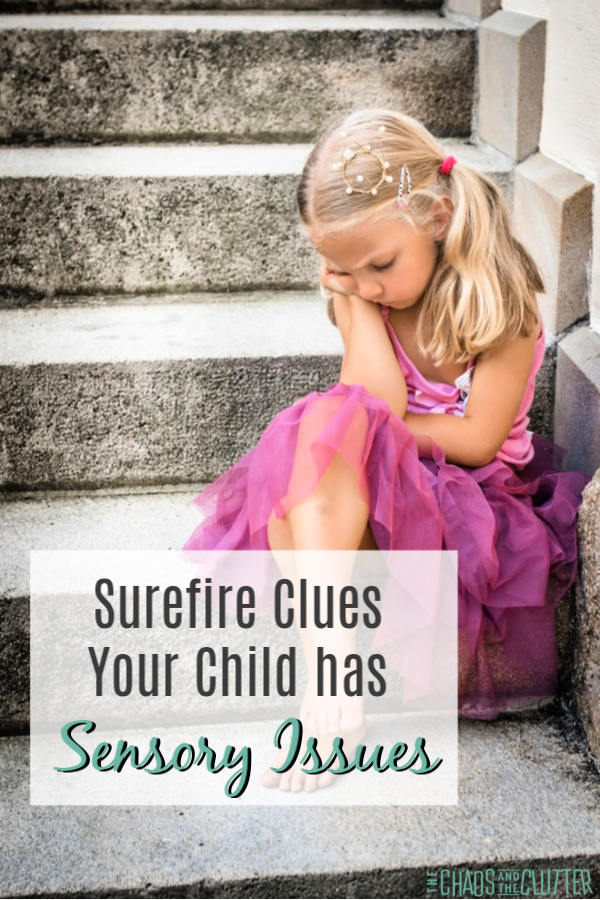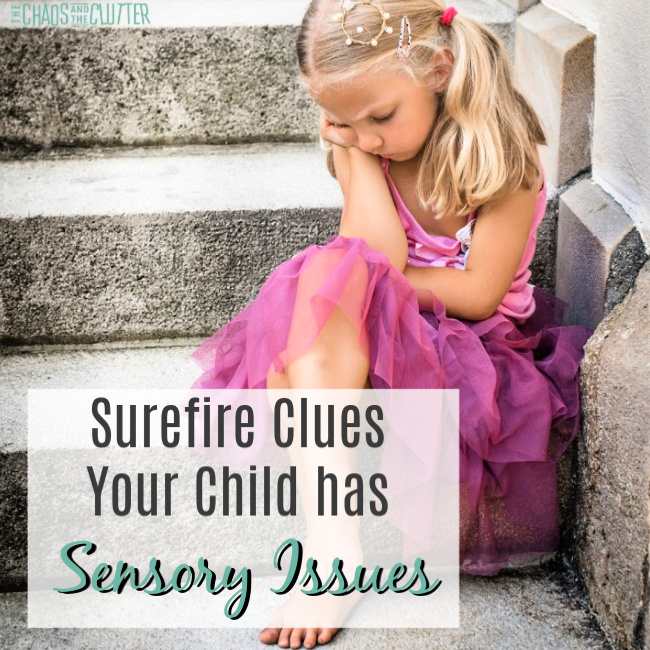Do some of your child’s behaviours or reactions ever leave you scratching your head? Maybe you’ve noticed that their responses don’t seem typical for a child of their age or development. Your child may have sensory issues.
I still remember how helpless I felt watching our oldest daughter struggle when she was younger. Gracelyn came to us when she was just three days old, weighing 4 pounds and 14 ounces. It was love at first sight!
As she grew a bit older, some of her behaviours baffled us. She would spin around and around and around and never seemed to get dizzy. She would strip off her clothes in winter to put on a bathing suit just as we were about to walk out to door to get groceries. When we finally did get out the door to go shopping, she would reach out and touch everything on the shelves and even sometimes touch people as we walked past.
 Gracelyn had a freakishly high pain tolerance and it would sometimes lead to injury as she also seemed to have no concept of danger. She broke things by accident because she wasn’t aware of her own strength.
Gracelyn had a freakishly high pain tolerance and it would sometimes lead to injury as she also seemed to have no concept of danger. She broke things by accident because she wasn’t aware of her own strength.
One of the many things she broke was the necklace I had worn at my wedding. I knew it was just a “thing”, but I cried nonetheless.
She would have meltdowns for what seemed to be no reason. She pulled down all the decorations in her room and started to pick holes in her walls. This girl was the pickiest eater I had ever met. To this day, the only fruit she has ever eaten is a banana. She didn’t seem to have any attention span and would flit from one activity to another, leaving a huge mess behind her everywhere she went.
She preferred to be upside down to being right side up. And upside down is how I was starting to feel my life was while I tried to figure out how to parent her!
Does my child have sensory issues?
If you’re a parent or caregiver who’s wondering if sensory might be the answer to some of the challenging behaviours you are experiencing with your child, I’ve put together a list that may help end the mystery or at least get you on the right path to uncovering answers for your child.
Note that some of the items on the list seem to contradict each other. That’s because in each of the sensory systems, your child can be hypersensitive or hyposensitive, meaning that they can be sensory seeking or sensory avoiding.
To make things even more confusing, a child can be sensory seeking in one sensory system and sensory avoiding in another!
Signs Your Child has Sensory Issues:
Does your child…
- Chew on their sleeves or pencils
- Complain of tags or seams in clothing or socks
- Seem hungry all the time or never seem hungry
- Have a hard time falling asleep
- Cover their ears to block out noise
- Spin in circles and never get dizzy
- Bounce off the walls
- Hide under desks or tables
- Have frequent meltdowns over seemingly small things
- Seem overly picky or have sensitivity to food textures or tastes
- Want to wear gymnastic suits or bathing suits rather than clothes
- Get distracted by background noise
- Complain of headaches
- Avoid getting their hands or face messy
- Need to touch everything
- Seem to not understand their own strength
- Avoid hugs or hug too hard
- Have difficulty concentrating
- Cry about lights or sun being too bright
- Fidget
- Tire easily
- Complain often of being too hot or too cold
- Avoid grooming
- Have a super high or super low pain tolerance
- Gag easily
- Avoid or seek out certain smells or textures
- Have poor body awareness
- Seem clumsy
- Accidentally break things
- Take their shoes and socks off at every chance
- Hang upside down
- Fear climbing or spinning
- Constantly move
- Prone to motion sickness or becomes dizzy easily
- Wet the bed
- Rage
- Speak loudly (does not seem to have volume control)?
If you found yourself nodding at some of the items on this list, your child may be struggling with sensory issues or challenges. They may even have Sensory Processing Disorder. Speak to your child’s doctor or seek out the advice of an Occupational Therapist to help confirm this.
In the meantime, arm yourself with knowledge and strategies to help your child.
Can a child have sensory issues and not be autistic?
It is common for children on the autism spectrum to have sensory issues or SPD (sensory processing disorder). However, not all children with SPD have autism. In fact, many children with sensory issues do not have autism.
SPD is often a secondary diagnosis to autism, ADHD, RAD, and FASD. It is also found in children without any other diagnosis.
How can I help my child with sensory issues?
The most important step is to increase your knowledge about sensory. This will allow you to not only have the tools and skills to be able to help your child, but give you a deeper understanding of why their responses are the way they are.
Join me for a free 5 part email series Sensory Solutions and Activities. This will give you a solid foundation in sensory basics along with helpful tips and you’ll get the Sensory System Behaviours Easy Reference Cards.
Learn what you can. Here are some of the best books on sensory processing for parents.
Read 10 things you can do to make every day easier for sensory kiddos.
Teach your child about sensory processing so that they have the language to better explain themselves. This will also help them understand their sensory signals and preferences.
Learn to recognize the signs of sensory overload in your child. You’ll find this very helpful. This can also help you prevent sensory meltdowns.
This will start you on the path towards better understanding of your child’s sensory issues. You will gain the tools you need to be able to help them. Life for them and for you will start getting easier.
It can be overwhelming in the beginning, but trust me, it gets better. Our daughter (and 4 of our other kids who also turned out to have SPD) are all doing amazing now. There is so much hope.
